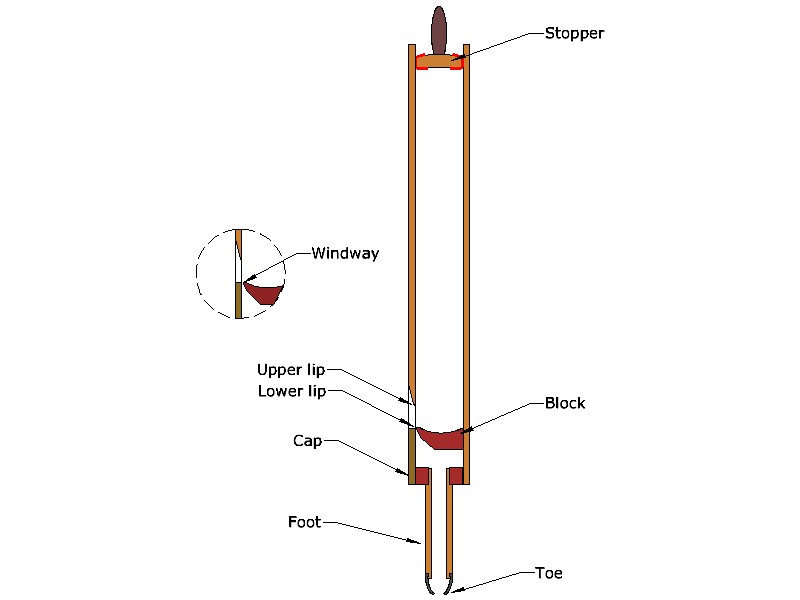The basic principle of the stopped flue pipe is the same as that of the open pipe.
The main difference is that the top of the pipe is plugged by a stopper or a metal canister. These are moveable in the same way as the tuning slide on an open flue, to tune the pipe.
The main practical difference between an open flue and a stopped flue pipe is that a stopped flue pipe sounds an octave lower than an open flue pipe of the same length. An 8′ Tibia is therefore half the length of an 8′ Open Diapason.
The most familiar stop on the theatre organ, the Tibia Clausa, belongs to the family of stopped flues. Other stops of this family include the Quintadena and the Stopped Flute.
In a few cases, for example some Christie Tibias, the stopped is pierced with a hole to promote development of certain harmonics.

